Alopecia Areata is a disease that leads to hair fall in small patches, which can’t be noticeable. These patches may connect, and then become evident — the condition changes when the immune system attacks the follicles of hair, resulting in hair loss.
Sudden hair loss might occur on the scalp and in some cases, the eyelashes, eyebrows, face, and other parts of the body. It can also develop gradually and recur after years between instances.
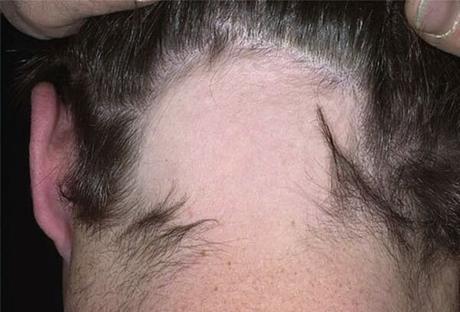
The condition can lead to hair loss from the entire body, known as Alopecia Universalis. It can prevent hair from growing back (1).
When the hair grows back, it can fall out again. The extent of hair loss and regrowth may vary from person to person.
Alopecia Areata Symptoms:
The key symptom of Alopecia Areata is hair loss. Hair falls typically occur in small patches on the scalp. These patches are several centimeters or less.
The condition can lead to total hair loss from the scalp, called Alopecia Totalis (2)
Hair loss may also happen on the face area, such as the eyebrows, eyelashes, beard, and other parts of the body. Some individuals lose hair in a few spots. Others lose it in a lot of places.
You might initially notice clumps of hair on your pillow or in the shower. If the spots appear on the back of your head, someone may bring it to your attention.
However, other health conditions can also trigger hair to fall out in a similar form. Hair loss alone is not used to diagnose alopecia areata.
The hair loss related to alopecia areata is unpredictable and spontaneous.
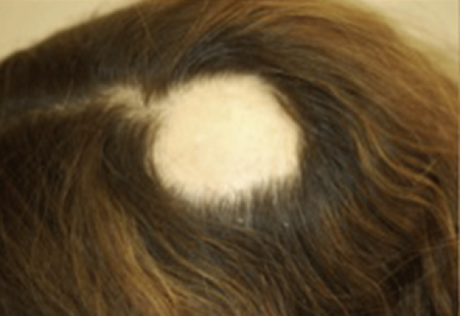
Causes:
Alopecia Areata is an autoimmune condition. An autoimmune disorder occurs when the immune system mistakes healthy cells for foreign substances (3).
Usually, the immune system protects your body against foreign intruders, such as viruses and bacteria. Your immune system may accidentally attack your hair follicles.
Hair follicles are the patterns from which hair grows. The follicles become smaller and stop generating hair, leading to hair loss.
Experts do not know the exact cause of this situation.
However, it mostly occurs in people who have a family history of other autoimmune conditions, such as type 1 diabetes or rheumatoid arthritis (4,5).
Hence some scientists suspect that genetics may lead to the development of alopecia areata.
They also believe that specific factors in the environment are required to prompt alopecia areata in people who are genetically predisposed to it.
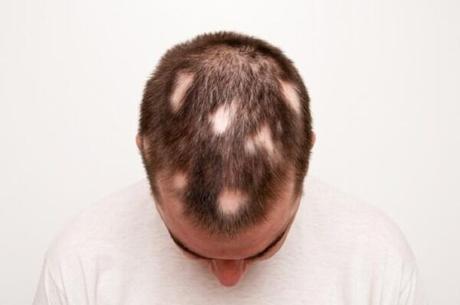
Alopecia Areata Diagnosis:
A health specialist may be able to diagnose Alopecia Areata by merely looking at the extent of your hair loss. Additionally, the expert will also study a few hair samples under a microscope.
Your medic may also perform a scalp biopsy to rule out other disorders that cause hair loss, including fungal infections like tinea capitis(6,7).
At the time scalp biopsy, your doctor will remove a small piece of skin on your scalp for examination.
Blood tests can be done if other autoimmune conditions are possible.
The specific blood test depends on the particular ailment the doctor suspects.
However, a doctor is most likely to test for the presence of one or more abnormal antibodies. If these antibodies are discovered in your blood, it means that you have an autoimmune disorder.
Treatment Options:
Injections:
Steroid injections are used for mild, patchy alopecia to aid hair to grow back on bald areas. Tiny needles inject the steroid into the skin of the affected regions.
This treatment has to be repeated every one to two months to regrow the hair. It does not prevent new hair loss from occurring.
Topical Agents:
You can rub the medications into your scalp to help stimulate hair growth.
Many medications like Minoxidil and Anthralin are available, both over-the-counter (OTC) and by prescription (8,9).
Oral Treatment:
A natural supplement like Folexin will be a good option if you want to get rid of hair problems. However, talk to your doctor before trying any herbal or vitamin supplement.
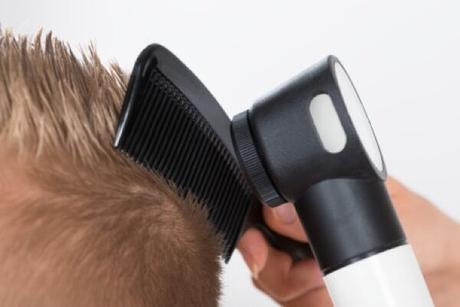
Alopecia Areata In Children:
Kids can develop alopecia areata. Most of the people with the condition will experience their first hair loss before 30 years of age.
Additionally, children may experience nail defects like pitting or lesions. Adults may experience this new symptom, too, but it’s more frequent in children.
As per the research, children younger than the age of five don’t experience much of an emotional impact from alopecia (10).
After the age of 5, hair loss can be traumatizing for young children as they begin noticing how they look different from others.
Alopecia Areata in Males And Females:
Alopecia areata happens in both men and women. Men are likely to have a family history of hair loss.
Men may come across hair loss in their facial hair, scalp, chest, and back hair. In comparison with male-pattern baldness, which is a slow thinning of hair all over, hair loss from this disease causes patchy hair loss.
In women, hair loss can occur on the scalp, eyebrows, and lashes.
Unlike female-style hair loss, which is a gradual thinning of hair that envelops a large area, Alopecia Areata may be limited to a small space.
The hair loss may happen all at once, too. The area can gradually expand, which leads to more significant hair loss.
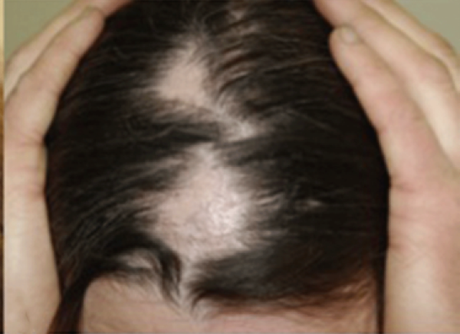
Takeaway:
Currently, there isn’t any cure for Alopecia Areata disorder. However, the above treatments that may help hair grow back more quickly, and that can prevent future hair loss.
Several resources are also available to help people deal with stress related to hair loss.
The effectiveness of each treatment may vary from person to person. On the other hand, a balanced diet is beneficial to your overall health for many reasons.
